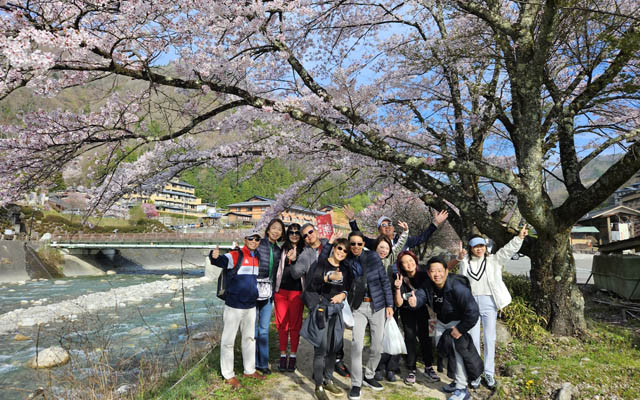As the Japanese yen continues to languish near a 34-year low, standing at 154.67 yen to one US dollar as of April 17, moods of Singaporean travellers eyeing Japan holidays in the coming months are soaring on the back of stronger buying power.
Jeremiah Wong, senior marketing communications manager at Chan Brothers Travel, one of Singapore’s largest outbound travel agency, told TTG Asia that the “influence of currency exchange rates on travel decisions is undeniable” and the “weakening yen serves as an added incentive” for Singapore residents to explore Japan.

Japan National Tourism Organization (JNTO) data shows that 591,300 Singaporeans visited Japan in 2023, an increase of about 20 per cent compared to 2019 numbers.
“That not only broke our 2019 records, (but) the recovery rate was also higher than what was observed from (other traveller markets). Japan and JNTO would like to express appreciation to Singaporeans who have chosen Japan as their travel destination,” said the JNTO Singapore Office spokesperson.
The favourable exchange rate between the yen and the Singapore dollar would further enhance Japan inbound tourism, opined JNTO Singapore Office’s executive director, Takuya Shiraishi.
Shiraishi said: “Before the pandemic, S$100 bought 8,000 yen; now it buys over 11,000 yen. While commodity prices have been rising in Japan, Singaporeans can still enjoy spending in Japan.”
Speaking to TTG Asia from Japan where she is leading a trek through Nakasendo, Alicia Seah, co-founder of Singapore-based adventure specialist, 3Playtopia, said the “weakening of yen is just a sweetener for travellers to visit Japan”, especially since the destination is already an ideal one for travellers seeking a unique and unforgettable experience.
She believes that the strong buying power will encourage more repeat travellers to go deeper into Japan, driving visitation to areas such as Fukuoka, Nagoya, Yamagata and Shizuoka.
Chan Brothers Travel’s Wong echoes the expectation, saying that first-time visitors would be drawn to hot favourites – central Japan and Hokkaido – while repeat travellers would go for regional gems such as Kyushu, Okinawa and Tohoku. To capture travellers, the agency has launched regional tours of Japan and curated self-drive itineraries.
“We are also seeing certain segments of customers wishing to travel during the shoulder season from May to August to take further advantage of the thinner crowds and potentially lower expenses as a result of the favourable exchange rate and shoulder-season promotions,” said Wong.
Shiraishi expects the increasing number of flights between Singapore and Japan to also catalyse a surge in demand out of Singapore this year. ANA Holdings’ Air Japan is the newest addition to the Tokyo (Narita)-Singapore route, set to commence operations on April 26.
When asked if pricey airfares between Singapore and Japan would cancel out savings from the favourable exchange rate, Wong said the situation has not dampened Singaporeans’ love for Japan.
Seah agreed that travellers “are no longer bothered by airfares once they have decided on the destination”, adding that airfares would continue to rise due to high fuel cost, sustainability measures, and fleet upgrades. However, better airfares could be accessed by planning in advance and booking at least three to nine months before departure.
Catalysing demand
The weak yen and continued interest in Japan are presenting the JNTO Singapore Office with an opportunity to build on growing demand. It has plans to intensify destination promotions this year.
On the B2B front, the office will conduct seminars for travel agencies as well as joint advertising with travel agencies and airlines. It will also strengthen cooperation with the media.
On the B2C front, the office is considering exhibiting at the travel fairs hosted by the National Association of Travel Agents Singapore and at events related to pop culture, alongside online advertising. Messages will focus on pushing travel demand to hidden gems in the rural areas of Japan.
Shiraishi said: “Japan has 47 prefectures. Tokyo, Osaka, Kyoto, and Hokkaido have been key destinations, but there are many other charming spots that await exploration and discovery. The Hokuriku region is currently a hot spot. With the Hokuriku Shinkansen being extended to Fukui Prefecture since March, visits from Tokyo have become easier and more convenient.”
He urged Singaporeans to access Toyama and Fukui by the Hokuriku Shinkansen, and said these areas are known for their high quality seafood and memorable stays in tranquil temples and traditional houses.













